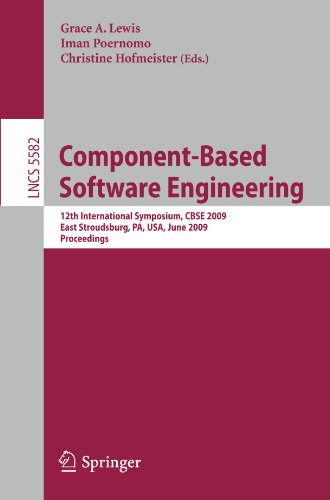

Most ebook files are in PDF format, so you can easily read them using various software such as Foxit Reader or directly on the Google Chrome browser.
Some ebook files are released by publishers in other formats such as .awz, .mobi, .epub, .fb2, etc. You may need to install specific software to read these formats on mobile/PC, such as Calibre.
Please read the tutorial at this link: https://ebookbell.com/faq
We offer FREE conversion to the popular formats you request; however, this may take some time. Therefore, right after payment, please email us, and we will try to provide the service as quickly as possible.
For some exceptional file formats or broken links (if any), please refrain from opening any disputes. Instead, email us first, and we will try to assist within a maximum of 6 hours.
EbookBell Team

5.0
20 reviewsThe 2009 Symposium on Component-Based Software Engineering (CBSE 2009) was the 12thin a series ofsuccessful eventsthat havegrowninto the main forum for industrial and academic experts to discuss component technology. Component-based software engineering (CBSE) has emerged as the under- ing technology for the assembly of ?exible software systems. In essence, CBSE is about composing computational building blocks to construct larger building blocks that ful?ll client needs. Most software engineers are involved in some form of component-based development. Nonetheless, the implications of CBSE adoption are wide-reaching and its challenges grow in tandem with its uptake, continuing to inspire our scienti?c speculation. Component-based development necessarily involves elements of software - chitecture, modular software design, software veri?cation, testing, con?guration and deployment. This year’s submissions represent a cross-section of CBSE - search that touches upon all these aspects. The theoretical foundations of c- ponent speci?cation, composition, analysis, and veri?cation continue to pose research challenges. What exactly constitutes an adequate semantics for c- munication and composition so that bigger things can be built from smaller things? How can formal approaches facilitate predictable assembly through b- ter analysis? We have grouped the proceedings into two sub-themes that deal with these issues: component models and communication and composition. At the same time, the world is changing.